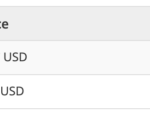Often, bad actors may try to take advantage of the goodwill of a brand by cybersquatting on domain names that will be associated with the brand. Their intentions may vary from wanting to sell the domain to the rightful owner at exorbitant prices to selling counterfeit products to unsuspecting consumers. In addition to tarnishing and diluting the image of a brand, cybersquatting may also cause a business and brand to lose customers as the customers may visit the incorrect website due to typographical errors.
Cybersquatting may be done through various means. For example: the brand name is “Aprajita”, and the brand owner owns the domain name www.aprajita.com. Now, cybersquatting may be done through any of the following, among other means:
- Registering a misspelled version of the domain name: www.aparajita.com
- A differently phrased domain name: www.aprajitas.com
- Any other top-level domain: www.aprajita.org or www.aprajita.in
Also, there may be a case where you own a famous brand, but you haven’t registered any corresponding domain name yet. A bad actor may take advantage of such a situation and get a suitable domain name registered to sell the same to you later at a very high price. If you encounter such situations, you may send a notice to the domain name Registrant with a copy to the concerned domain name Registrar demanding transfer of the infringing domain name to you and for the Registrant to tender an undertaking to refrain from further misuse. The name of the Registrant and domain name Registrar can be checked from the WHOIS database. In case the dispute is not settled through notice, then you may go ahead and file a domain name complaint.
UDRP Policy
If the dispute pertains to a Generic top-level domain (gTLD) such as .com, .org, .net, .gov etc., then the complaint can be filed under the Uniform Dispute Resolution Policy (UDRP) policy. The Internet Corporation for Assigned Names and Numbers (ICANN) adopted the UDRP policy on August 26, 1999 based on recommendations made by the World Intellectual Property Organisation (WIPO). Under this policy, a trademark holder can initiate a proceeding against a domain name Registrant, if he considers that a domain name registration infringes its trademark. WIPO is the most commonly used forum under the UDRP policy. In the domain name complaint, you can pray for cancellation of the Registrant’s domain name or the transfer of the domain name registration to you.
Procedure:
The Complaint is filed electronically with the WIPO centre. Under the UDRP policy, a complaint should meet the following criteria:
(i) the domain name must be identical or confusingly similar to your trademark; and
(ii) the Registrant has no rights or legitimate interests in respect of the domain name in
question; and
(iii) the domain name has been registered and is being used in bad faith.
Once the complaint is filed, WIPO checks it for administrative compliance. If there are any deficiencies in the complaint, they are notified to the Complainant (you) who must rectify them within 5 days. Thereafter, the complaint is sent to the Registrar with a copy to the Registrant/Respondent. The Registrant/Respondent must file the response within 20 days from commencement of proceedings. Upon receipt of the response, a sole arbitrator or an arbitration panel is appointed by WIPO within 5 days. The sole arbitrator/arbitration panel is required to decide upon the matter and submit its decision within 14 days from the date of the appointment of the arbitrator/panel.
Once the decision is submitted, WIPO notifies the decision to the parties and Registrar within 3 business days of receipt of decision. If the complaint is dismissed, the Registrar is not required to take any action. However, if the complaint has been allowed, the Registrar is required to implement the decision of the arbitrator/ panel after 10 business days of receipt of the decision i.e., transfer of domain name to you or cancellation of domain name, unless within the 10 days period, it receives any official documentation that the Registrant/ Respondent has commenced a lawsuit against the Complainant in a Mutual Jurisdiction. In such a case, the Registrar will take no action until it receives satisfactory evidence that the matter has been resolved, or the lawsuit has been dismissed or withdrawn or a copy of an order from the court that the Registrant/Respondent has no right to use the domain name. UDRP does not have any appeal procedure. If aggrieved, the parties can initiate fresh proceedings before the court.
 Agencies
AgenciesINDRP Policy
If the dispute pertains to country code top level domain (ccTLD) which is .IN for India, then the complaint may be filed with under the .IN Dispute Resolution Policy (INDRP) and INDRP Rules of Procedure with the National Internet Exchange of India (NIXI), also referred to as the .IN Registry. In the complaint, you may ask for cancellation of the Registrant’s domain name or the transfer of the domain name registration to you.
Procedure:
In September 2020, NIXI carried out certain amendments in the INDRP Rules of Procedure, INDRP Policy and the Code of Ethical Conduct for Arbitrators. These rules have made way for electronic mode of filing and communication. The Complainant can file a complaint addressed to ‘.IN Registry’ by way of email. Sending a physical/ hard copy is not required anymore. The complaint can be filed on the following grounds:
- The domain name in question is identical or confusingly similar to a trademark/service mark in which the Complainant has rights; and
- Registrant/Respondent has no rights or legitimate interests in respect of the domain name; and
- The domain name in question has been registered or is being used in bad faith or for illegal/unlawful purpose.
On receipt of the complaint, the .IN Registry shall evaluate the same for compliances and discrepancies (if any) will be notified to Complainant within 5 working days who will then be given 7 working days to make rectifications. Once the complaint has become compliant with the Rules, .IN Registry will appoint an arbitrator within 5 working days. Earlier, the .IN Registry used to forward the complaint to the arbitrator; however, after the amendments, it is now the duty of the Complainant to forward a soft copy of complaint (along with annexures) to the appointed arbitrator within 2 working days of receiving the notification email informing about the appointment of arbitrator. The Complainant is also required to ensure service of soft copy as well as hard copy of complaint along with annexures to Registrant/Respondent and provide proof of service.
The arbitrator will then set a time limit for the Registrant/Respondent to file its submissions. Thereafter, the arbitrator would review the submissions made by both sides and then pass a decision on the merits of the case. There are no in-person hearings, unless there is an exceptional circumstance decided by the arbitrator and even in such cases, the number of in-person hearings is limited to 2 hearings. The arbitrator is required to pass the decision within 60 days of commencement of proceedings and under exceptional circumstances it can be extended by a period of 30 days. The decision of the arbitrator is communicated in writing to the parties by the .IN registry within 5 days of receiving it from the arbitrator.
While the above stated legal remedies are available in case any domain name dispute comes up, it is better to zealously safeguard your intellectual property including your domain names.
Some Proactive Measures that brand owners can take:
- Register all popular top-level domains and have those domains redirected to your original website. For example: if your original website is www.aprajita.com, you can also register www.aprajita.in and have it redirected to the original website on the .com domain.
- Renew your domain registrations in a timely manner to prevent parties from sweeping them away.
- There are no special legislations to deal with domain name policing and legal grounds for filing complaints depend on your trade mark registrations. Therefore, it is important to get the distinctive part of your domain name registered as a trademark.
- Subscribe to legal watch services to conduct frequent checks for identical and similar domain names.
- It is also imperative to spread awareness among consumers and explain to them what fake domains may look like, so they are not fooled into visiting incorrect websites or buying counterfeit products.
(The writer is an advocate, specializing in the domain of intellectual property rights and presently working as a Managing Associate with LexOrbis, an IP boutique firm based in New Delhi, Mumbai and Bengaluru.)





